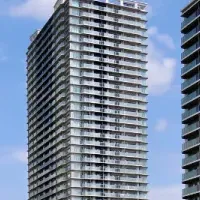
Welcoming Mason Bees to Your Garden: A Comprehensive Guide for Spring Care
Welcome Spring Mason Bees into Your Yard!
As the chilled air of winter starts to fade and temperatures begin to rise, it’s time to prepare for the emergence of mason bees, a non-aggressive species of pollinators vital for flowering plants. These remarkable bees leave their cocoons when the temperature hits 55°F (around 13°C), and they are ready to nurture their young and pollinate plants. Surprisingly, millions of bee hotels are sold every year, many finding their place in backyards, yet most come without important maintenance instructions. It's crucial to understand that proper care is imperative for protecting these essential creatures from the many predators lurking in their habitats. Let's dive into how you can welcome mason bees into your garden this spring!
Why Mason Bees?
Mason bees are solitary insects; each female lays her own eggs, builds her nest, and finds food independently. Unlike honeybees, they do not have a hive, queen, or honey, which makes them non-aggressive and harmless to humans. One fascinating aspect of these bees is their efficiency as pollinators; the fine hairs covering their bodies collect loose pollen, assisting them in pollinating about 95% of the blossoms they visit — with each bee capable of visiting over 2,000 blooms in one day!
Preparing for Spring
To create a hospitable environment for your mason bees, certain steps must be taken at the beginning of the spring season:
1. Fresh Nesting Material: Place new nesting materials for the bees at the start of spring. Bee houses are not meant to have year-round occupants; replacing nesting material keeps the habitat healthy.
2. Clean Nesting Options: Avoid using bamboo or drilled logs for nesting due to their tendency to become moldy. Instead, opt for stacking trays or cardboard tubes that are easy to open for maintenance.
3. Food Sources: Plant early-blooming flowers and allow dandelions (a significant food source for bees) to flourish in your garden. Avoid using any chemicals or pesticides that could harm these vital insects.
4. Proper Placement: Mount your bee house on a flat surface like a fence or wall, avoiding tree branches where potential predators could easily access them.
5. Sunlight Exposure: Choose a sunny location that enjoys sunlight from morning until afternoon to ensure the bees are warm during their active hours.
6. Height Matters: Place your bee house at a height of 5 to 6 feet off the ground for optimal accessibility.
7. Mud Supply: Provide a non-chemical, clean mud source located 5-10 feet from the bee house—this is essential for nesting.
Summer and Beyond
After the busy spring season, remember that mason bees have a short life span of about 6 to 8 weeks. Thus, it's important to remove their nesting materials in early summer to prevent attracting predators such as mono wasps that can decimate their larvae. Store unused nests in a cool, dry place until fall.
Fall and Winter Maintenance
As colder weather approaches, cleaning and harvesting bee cocoons become vital for their survival. This process involves removing harmful threats such as pollen mites, Houdini fly larvae, mono wasps, and chalkbrood that can compromise the health of the bees. If managing the bees is cumbersome, consider renting them from companies specializing in pollinator health. This way, you can enjoy pollination without the hassle of upkeep.
Conclusion
By following these straightforward steps, you can create a thriving habitat that supports the mason bee population in your garden while promoting effective pollination of your plants. For those interested in deepening their knowledge of bee care, numerous resources, including step-by-step guides, are available on platforms like YouTube. Let’s adopt sustainable practices and cherish our buzzing friends this season!
Learn more about mason bees and pollinator health practices at Rent Mason Bees and contribute to a healthier ecosystem.
Topics Environment)










【About Using Articles】
You can freely use the title and article content by linking to the page where the article is posted.
※ Images cannot be used.
【About Links】
Links are free to use.